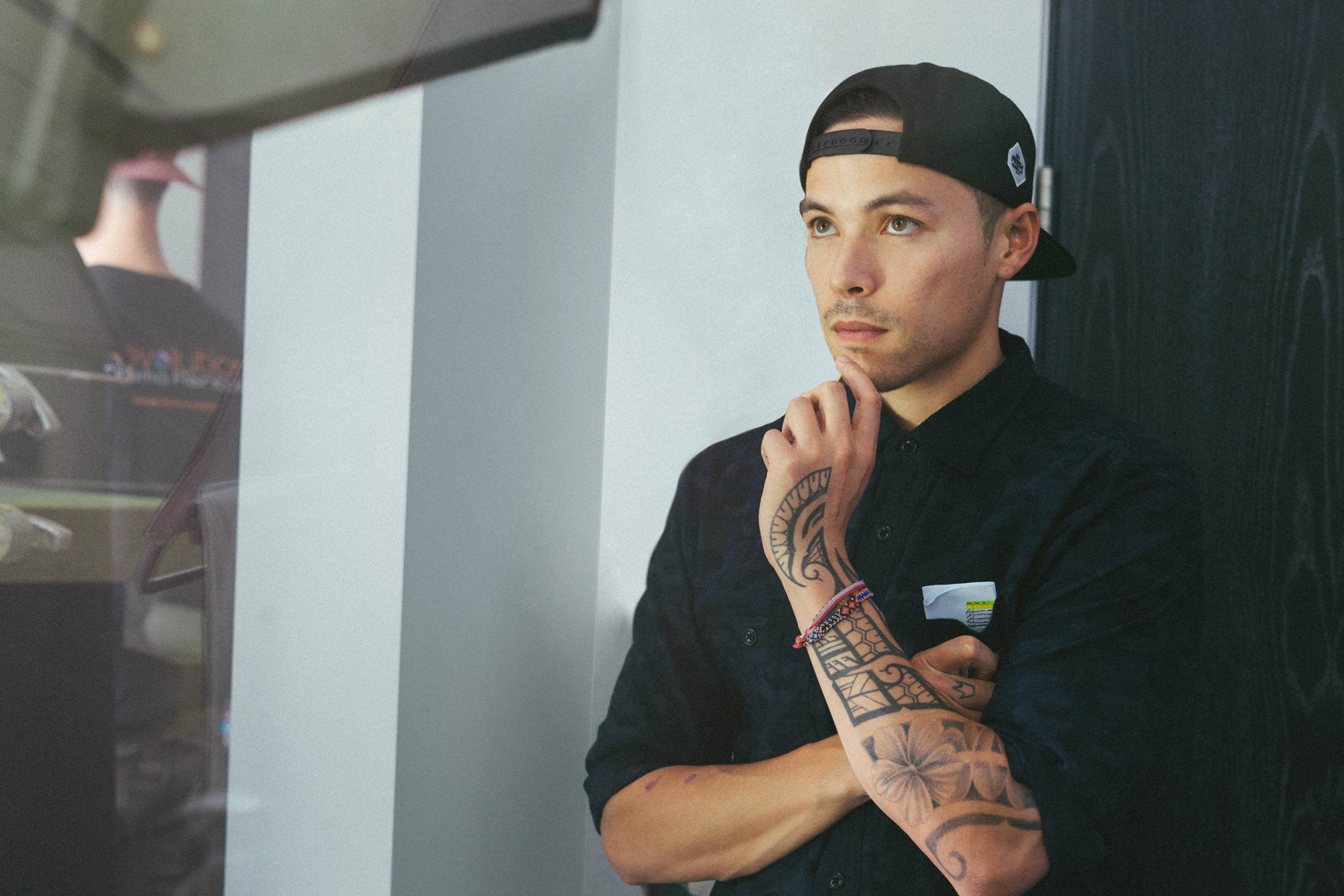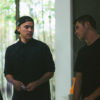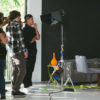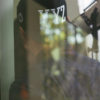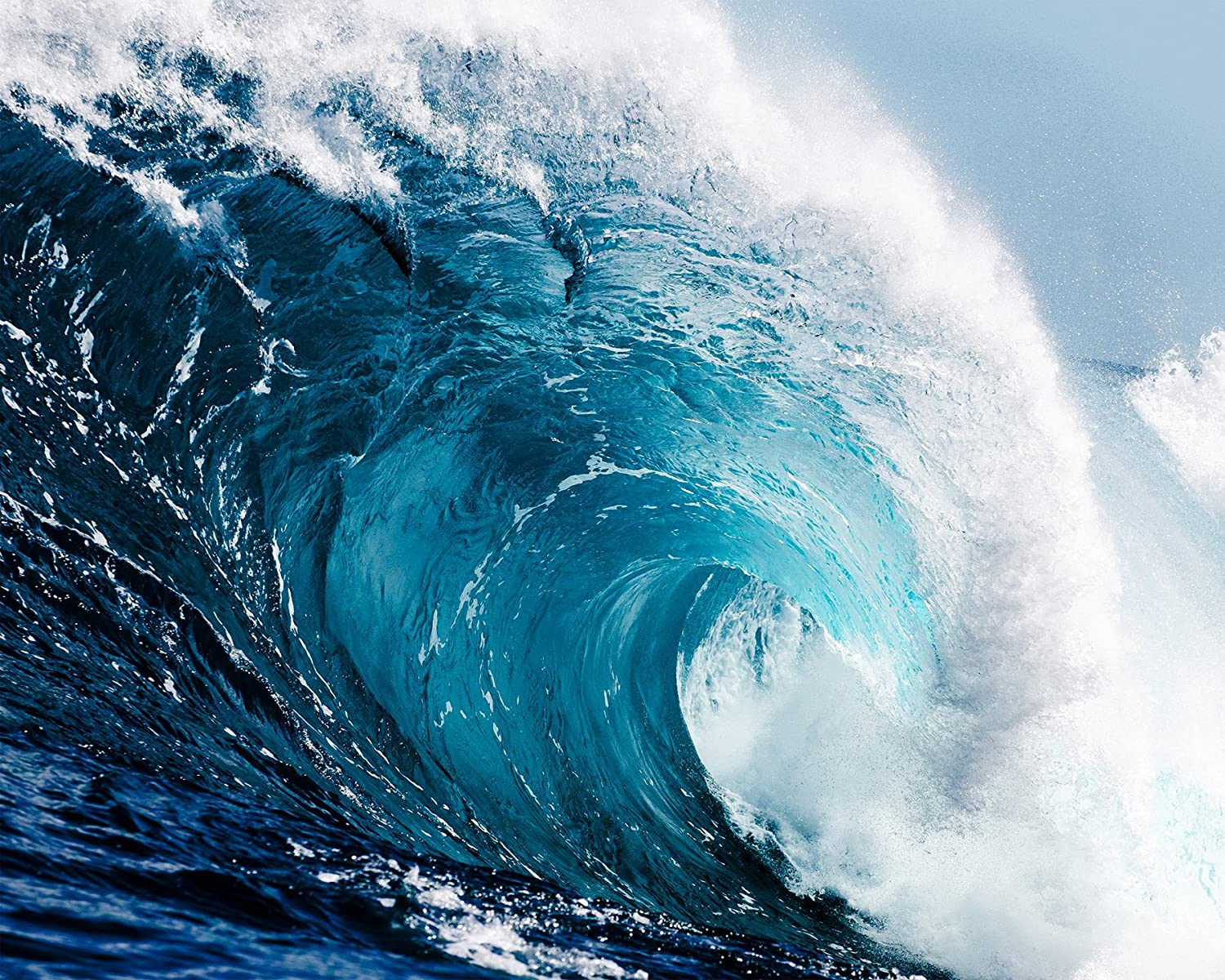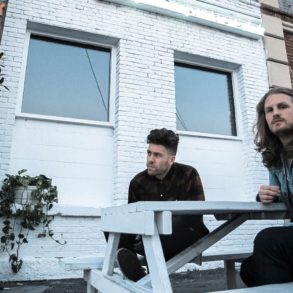Jon Jon Augustavo has established himself as a serious force in the music industry, earning recognition as a creator with unique vision and dynamic style. For the talented music video director, filmmaker and cinematographer, the past few years of his career have been an exciting ride. From his collaboration with Macklemore & Ryan Lewis on the viral sensations “Thrift Shop”, “Can’t Hold Us” and “Same Love” to Grammy Nomination (Best Music Video), 6 MTV Video Music Awards nominations and 3 awards, to working with the likes of Mike Posner, Sammy Adams, Tori Kelly, Mary Lambert, Ella Eyre, Allen Stone and many more.
Jon Jon invited SSW to the set of his latest music video in Los Angeles, where we got to see the director in action and spoke to Jon Jon about his creative process, on-set experiences and personal inspirations.
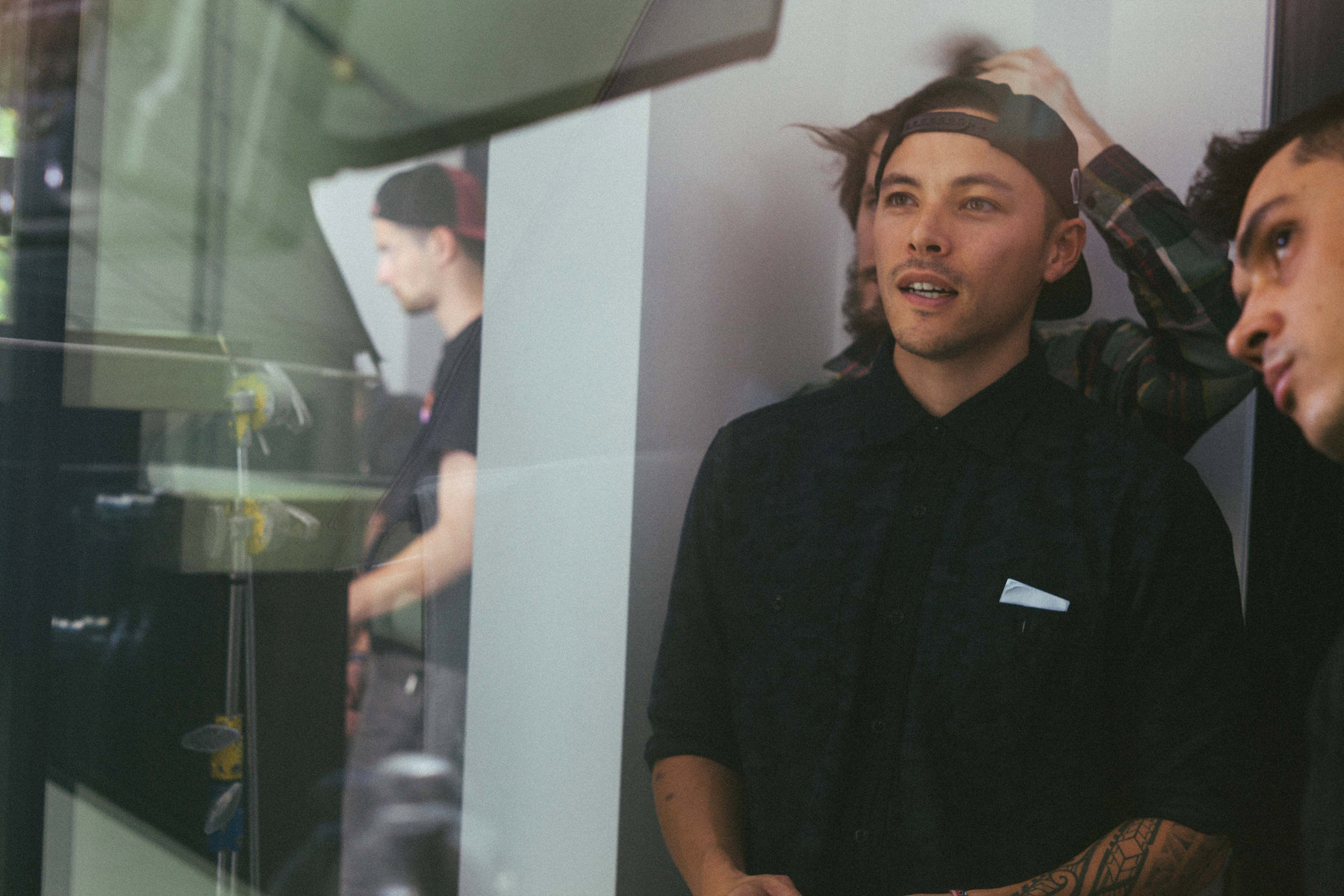
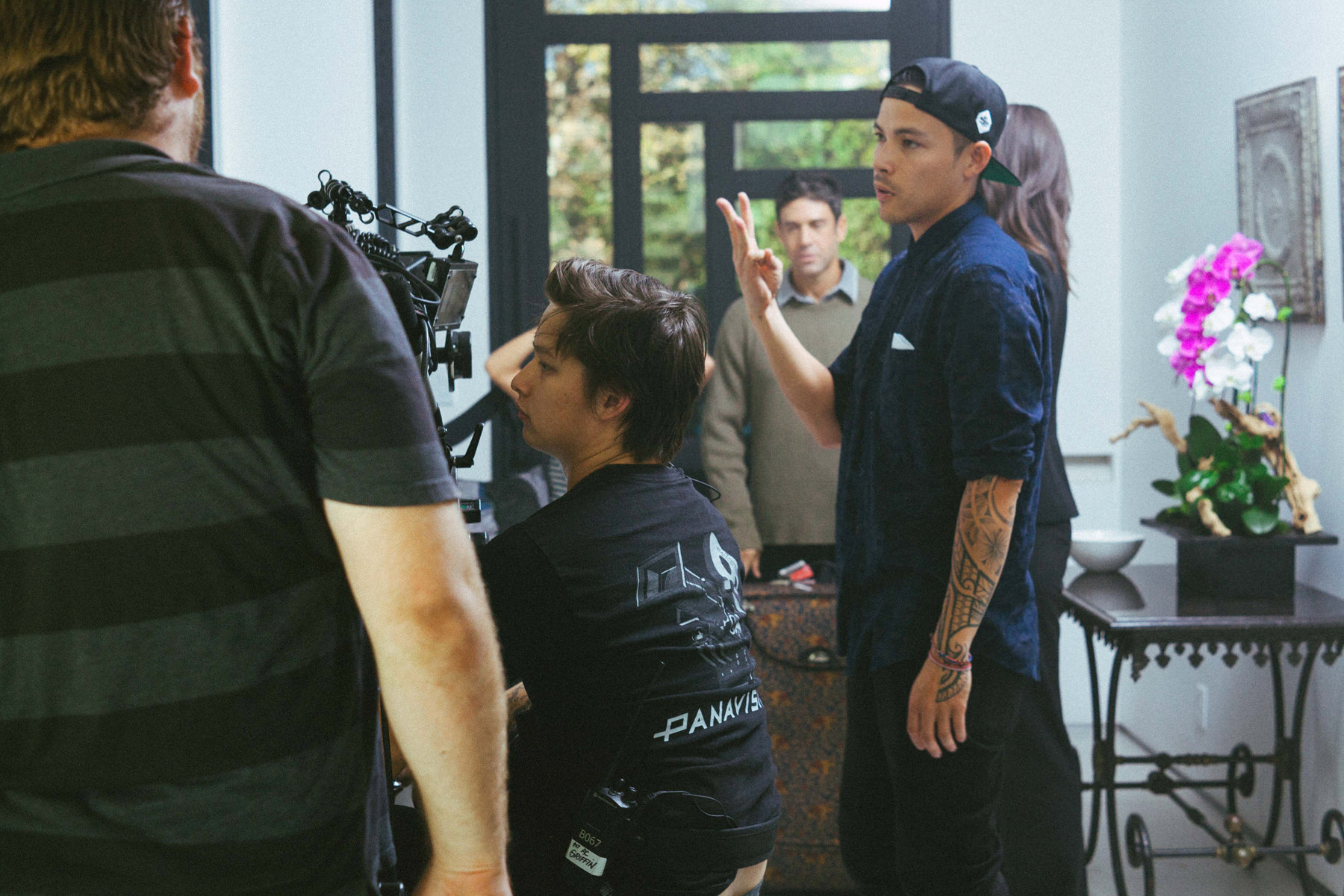
Jon Jon Augustavo by Polina Rabtseva
Surfing Sound Waves: Could you tell us something about yourself that people might find surprising?
Jon Jon Augustavo: I am a member of Alpha Phi Alpha Fraternity, a historically black fraternity – while I am not black.
How did you discover your passion in film and started pursuing it?
I’d say when I was a young teen my dad bought a camera and an iMac. I started to mess around with it, making small videos and immediately knew I wanted to do something visual as my job. I’d always make basketball highlight tapes or videos of my friends and I jumping in bushes. Soon that became small shorts and eventually music videos.
Your style is recognizable and distinctive. What inspires your aesthetics and vision for storytelling? Creatively, who are your personal inspirations?
I appreciate the compliment.
As I always say, I draw a lot of inspiration from fine artists and filmmakers. I have a strong love for the arts and find that studying things beyond film help me define and change my aesthetic. From artists like Cy Twombly, Matisse and Basquiat to filmmakers like Gus Van Sant, Spike Jonze, Harmony Korine – I find people who treat their work with a special eye and push to have a powerful visual really make a mark on my own creative style. More recently I studied heavily the works of Spike Lee, Korine and Gaspar Noe while shooting a video for ScHoolBoy Q – the way they saturate the image with colors and invent interesting shots helped inspire my own work in a big way.
What was your first music video experience?
The first music video I made was for a childhood friend of mine back in Seattle. He goes by the rap moniker Wizdom, but I call him David Mazzeo. I wanted to make a music video, and we set out to make something like what we saw on TV. It was interesting to say the least, and I truly enjoyed it. I learned a lot about the trust people have in you as a director to deliver your vision and realized quickly that I wanted to do more and get better.
How does your approach to commercials differ from your approach to music videos?
Since I am still pretty new to the commercial world take this with a grain of salt, but so far my approach in commercials has been to take what the client is asking for – deliver that to a tee, but then give them as much of me as possible, to the max of their comfort zone. With the commercial world I am finding there is less room to control the entire process, of course, however I do find there is WAY more trust in you as the director. If they hire you for the job, they one hundred percent trust your decision making.
Your collaboration with Macklemore & Ryan Lewis on “Thrift Shop”, “Can’t Hold Us” and “Same Love” videos was a huge success: millions of views, several nominations and awards. Since then you’ve worked with a lot of different artists (Ella Eyre, Mary Lambert, Sammy Adams and Mike Posner, Tori Kelly, Bosco Delrey, The Head and The Heart and many more). What is the most extraordinary experience you have had professionally so far, and why? Any video you’re particularly proud of?
I’m going to go the other way in terms of what is extraordinary. More recently I worked on a video that I was very proud of, one of the best I’ve done in my opinion – but for some odd reason the artist was not digging it and it will never see the light of day. So for me that project was an outlier that professionally I have yet to experience. I was super proud of the project and really gave every ounce of creative I have to offer and to find out it would never come out, was pretty brutal. It was definitely a learning experience and helped me realize a lot of things about myself and about this industry good and bad.
As far as things I am most proud of, this is a two-fold answer. First I am definitely very proud of the work Ben [Ben Haggerty, Macklemore], Ryan [Lewis], Mego, Tricia [Davis], Honna and I put in to create “Same Love.” In this short life I am not sure if I will ever make something that is more important than my own personal gain and actually has a cultural impact again. And if I never do, I will be happy that I was given the opportunity to craft a story and visual like we did with “Same Love.” Another video I am INCREDIBLY proud of is for an artist named Romeo Testa called “I’m So Down.” It was a shoestring budget and my friends and I went all in to make the best thing we could for him and I love what we made. It’s cinematic, surreal and beautiful – something I find is hard to achieve when you are no longer the only one in charge.
We loved the latest video you shot for The Head and The Heart (“Let’s be still”). What a beautiful video and such a great representation of the song. What was your on-set experience like and were there any unexpected moments?
This video was a labor of love. Six of us flew up to Seattle and shot for 4 days with Jon and The band. They were all amazing and my crew is the reason this happened. It was exhausting shooting sunrise then sunset, sleeping two hours then waking up to shoot sunrise again – napping and shooting sunset again. I can only thank my friends for jumping on board and Jon Russell (singer) for going all in on this video as well. He is a brilliant mind and I thank him for trusting me to craft his idea into my own visual.
I’d say the most unexpected moment of shoot was when we were driving our grip truck to the country to shoot the final scene of the whole video, day 4 – rush hour traffic and the truck breaks down. We need these shots to finish the video – for the video to have an opening scene, we park the truck, unload as much equipment as we can into the small minivan we have and hit the gas. Racing sunset somehow we pulled off the shots, they weren’t all the amazing dolly shots I had planned, but it was still gorgeous and somehow we did it.
What do you know now that you wished you knew when entering the industry? Were there many challenges and do you have advice for young up and coming directors?
In the few years I have been in the industry I feel I have grown like crazy – but the thing I wish I knew more than anything was how to write a treatment. When I first started I was terrible at it and with some guidance from some amazing directors I was able to get better and feel I understand the art of writing and crafting them much better.
There were of course challenges here and there. For young directors I say keep shooting, keep getting better and study, study, study. There is no time for rest, there are thousands of people standing in line to do the exact same thing you are doing – so never let your ego get in the way. If you get knocked down you need to get right back up, so just keep shooting – if you are good, someone will take notice and when they do – hit a home run. But never look at people around you and wonder how or why they are doing it, this is a marathon keep working and your time will come.
Throughout your career, what have you discovered about yourself?
I am a super hard worker, a surprisingly (to myself) good writer and way too polite for this industry.
What in your opinion creates a memorable video?
I honestly don’t know, no one really knows what will connect with people so I couldn’t tell you what makes a video memorable – but I do know having a good song helps a lot.
Any particular part of your job that you love the most? What excites you the most in your career? What scares you?
What I love the most about this job is when I hear how people interpret my work. I love telling stories and when people can find their own meaning that maybe I had never even intended, it really hits home, it really is what makes me realize this is what I love. The exciting thing is the potential – I don’t ever know what is next and that is amazing the unknown is amazing, I hope for better things but who knows. That is also scary because I could fail and never work again.
How closely do you work with artists during the creative process? How much creative control do you have working with artists, both Indie and major label?
I always try to work as close as I can with them. Ultimately this is a collaboration and I want to do justice to their music and make something we both love. On the label level I find I have less creative control than on the indie level. By the time a label video comes out i’d say it is 60% of what I had originally intended, but on the flip side I do have directors cuts to bring that up to about 80%.
Jon Jon Augustavo by Polina Rabtseva
In the past few years you wrote, directed and shot several short films. How different were those projects from your others, as the films were not intended for a specific client? Do you work on any films at the moment?
My shorts are surprisingly dark, as far as my film work I am much more in my head and a sad romantic. These films tone wise don’t match many of my videos but that is also because I have complete control of the idea from the ground up. I have an infatuation with the human condition and how people really are, not this over dramatized visualization of what people are like in Hollywood films. I want to portray decisions, life in a way that can reflect back on the viewer. This is of course very difficult because you are asking your viewer to actively watch – but I want to create thought and dialogue.
At this moment, I am writing a two features, well revising one and it is taking forever and producing another short at the moment.
Can you tell us about your experience funding projects. Did you ever try crowdfunding for any of your creations? What do you think about celebrities, major studios, and big brands using crowdfunding? Some say familiar faces within crowdfunding actually bring potential backers to websites and create more exposure for different projects, while others say these types of campaigns (for example “Veronica Mars” movie or Zach Braff’s “Wish I was here”) create bad precedent and take away from smaller creative projects. What are your thoughts on this?
I have crowd funded once. For my short film, “How to Disappear Completely.” I found the experience humbling and scary. Asking basically friends and family to support my art for the first time is so raw – it really puts you out there in a weird way. And then you need to share the film with them, hoping they are not disappointed. It is almost like baring you soul to strangers, because I had never really shared my film work with my close friends and family, just classmates. I put a lot of myself in my films and it is brutal to even watch them with people in the room.
As far as crowd funding for celebrities – I do find it slightly problematic because they already have money and or the contacts to get their work funded, but in the end if they find it is the best way to do their work, who am I to judge.
Do you have any favorite old-school videos that have inspired you?
Pearl Jam “Jeremy” – my favorite video ever. It’s dark, emotional and artistic – a beautiful blend of pop and film. Also just about any video by Spike Jonze.
Given that you have no budget, time, or talent restrictions, what is your ultimate dream project?
To shoot my feature film I wrote, it is a story that I want to tell and in this day and age needs to be told.
If there were a perfect soundtrack for this year of your life, which song would it be?
Radiohead “How to Disappear Completely (And Never Be Found Again)”
Artsurfer Mag features inspiring people. Which current peers of your industry inspire you?
JJ: Yoann Lemoine, I am comfortable saying he is director that definitely pushes me to be better.
Interview by Irina Liakh,
Photography by Polina Rabtseva
